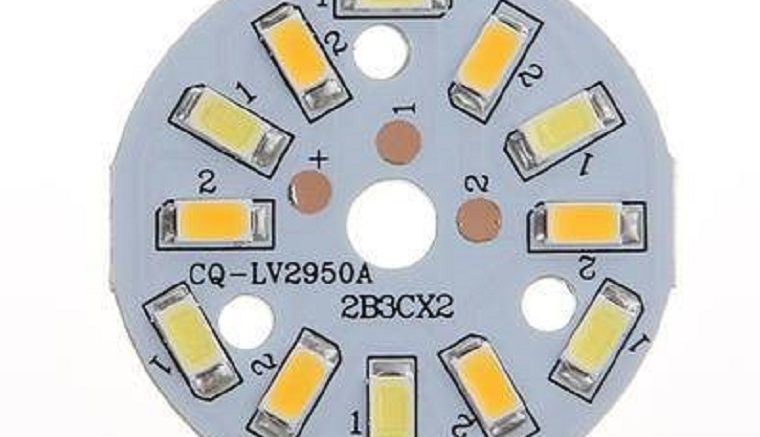LED stands for Light Emitting Diode, in which recombination of electron-hole pair creates heat as light energy. It deals with the principle of electroluminescence.
This transmitted light is responsible for the creation of a picture on the screen of the LED display.
We know about the way that LED is made out of inorganic semiconductor materials, in this manner recombination of electron and hole discharges energy, this heat energy in LED is made to be discharged in the foam of light particles.
Thus, making it produce light energy. In LED display the backlight used as the wellspring of light is normally a Light-producing diode.
Let us now understand how it works:
LED is fundamentally a p-n junction diode that works on a forward one-sided condition. As repulsive power on the electrons and holes by the battery terminals, makes them float over the junction. Electrons present at the conduction band (higher energy level) attempts to recombine with the hole present in the valence band (lower energy level).
During their transfer from higher energy level to lower one, electrons emit energy. This energy is in the form of heat yet some semiconductor materials discharge energy in the form of light.
Usually, semiconductors, for example, GaAsP and GaP are utilized in the development of LED TVs. As these have a fantastic property of producing energy in the form of photons.
Common uses:
There are numerous applications of the LED and some of them are clarified underneath.
• LED is utilized as a bulb in the homes and industries
• The light-producing diodes are utilized in the motorcycles and vehicles
• These are used in the cell phones to show the message
• At the traffic light signals LED’s are utilized
LEDs used for TV Backlighting
A TV’s backlight is a significant force consuming source. Uses of LEDs can give an effective force decrease. In the edges of the TV, utilizing a LED will be a cost decrease decision. Utilizing LEDs straightforwardly behind the display gives better contrast. LEDs have been replacing CFLs and LCDs with regards to TV backlighting.
LEDs used for Smartphone Backlighting
With the utilization of LED, the backlight plan of the cell phone can be thinner and be made within low price. The cost of LED may shift as per the size of the cell phone display. Because of the lower output voltage, they guarantee a longer battery life.
Definition of OLED
OLED is a shortening for Organic Light Emitting Diode. It is made out of natural semiconductor material consequently named as OLED. Here, thin layers of natural material are placed between two conducting material. This arrangement radiates splendid light on the application of current.
OLED innovation depends on the standard of electroluminescence-an optical phenomenon where light is produced from the material because of electric current flowing through that material. The significant use of OLED is in the region of advanced displays like TV screens, PC screens, cell phones, computerized cameras, and so forth.
Uses:
OLED displays are mostly utilized in advanced devices, for example, very good quality TV systems, PC screens, pocket-size systems, Android telephones, media players, computerized cameras, portable gaming consoles and mini-screens. Such kinds of applications request high dependability and coherence. OLEDs fit in as these consume less power and give a top-notch display. The present OLED innovation gives amazing shading devotion, high effectiveness and activity solidness.
Lamps – short distance indoor lamps
(produces a diffused light)
Displays – small: phones and media devices and enormous: TVs, PC screens
Let us now understand how it works:
An external potential is applied between the cathode and anode terminal. Because of which flow of current is seen from cathode to anode terminal but this flows through the 2 thin films which are named as the conductive and emissive layer between them.
The negative capability of the battery gives a negative charge to the cathode, thus the emissive layer because of negatively charged molecule goes about as an n-type material.
In a similar way because of the positive potential, anode supplies positive charges to the conductive layer, subsequently, the layer acts as a p-type material.
Further recombination of electron and holes happens at the emissive layer. Resultantly, the emissive layer is answerable for the radiation emission.
The procedure proceeds until the progression of current is kept up in the devices.
It is right to state that OLEDs are so little and consequently can be used as isolated pixels to form display of any screen, their distinction makes them be here and there independently.



Be the first to comment on "What’s the differences between LED and OLED?"